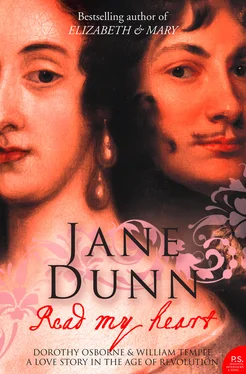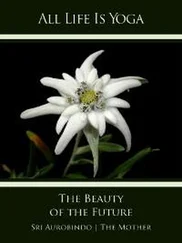At about the time this sister Mary was born, William was sent to be educated by his Hammond uncle Henry and live with him and his grandmother at the parsonage house on the Earl of Leicester’s Penshurst estate in Kent. Apart from his role as a much loved uncle, Dr Hammond became a highly important figure in young William’s life, more influential in nurturing the boy’s view of himself and his relationship to the world than his own father. William was seven or eight years old at the time and would grow up with much less of his father’s political intelligence and much more of his uncle’s romantic idealism, high-mindedness and social conscience.
Henry Hammond was barely thirty when he assumed his nephew’s moral and intellectual education. Despite a complete lack of self-promotional zeal, his academic career to that point had described a blazing trajectory. Excelling at Eton in both Latin and Greek and, unusually for the time, Hebrew, he was appointed as tutor in Hebrew to the older boys. Hammond’s lack of boyish aggression was remarked on and his gentle kindness and natural piety gave cause for some alarm in his more robust teachers. But something about this quietly studious and spiritual boy gained everyone’s respect. At the age of only thirteen he was deemed ready to continue his studies at Oxford, and became a scholar at Magdalen College. Before he was twenty he had gained his master’s degree and then turned his studies to divinity and was ordained by the time he was twenty-four.
Plucked from academia and court by the Earl of Leicester and planted in his rural idyll at Penshurst, Henry Hammond took up the much more varied and less exalted responsibilities of a country parish priest. It was in this role that his reputation as the most godly and lovable of men was burnished. Not only were his sermons marvels of accessible and provocative scholarship but also his pastoral care was exemplary, funding from his own income all kinds of schemes to support local children deprived of schooling, or their families of food or shelter. Strife and disharmony physically pained him and consequently he was the most successful peacemaker between families, neighbours and colleagues.
His social life exemplified that favourite biblical invocation: ‘Be not forgetful to entertain strangers; for thereby some have entertained angels unawares.’ 5 His contemporary and biographer, Dr John Fell, Bishop of Oxford, enjoyed this inclusive hospitality too: ‘he frequently invited his neighbours to his table, so more especially on Sundays, which seldom passed at any time without bringing some of them his guests’. 6 In fact so generous and unexpected was his charity that sometimes it appeared to strangers that it was he who was the angel after all: ‘his beneficiaries frequently made it their wonder how the Doctor should either know of them, or their distress: and looked on his errand, who was employed to bring relief, as a vision rather than a real bounty.’ 7
When Henry Hammond took up this position as country vicar his friends immediately urged him to marry in order to acquire the kind of domestic support necessary for the post, but when he found there was a richer rival for the woman he had chosen he withdrew, reconciling himself to celibacy. Luckily, his mother, for whom he had the greatest affection, uncomplicatedly fulfilled the domestic role in his life, managing to run the household, at least for the years he was tutoring his nephew. She as grandmother added her own motherly presence to the household William entered as a boy.
William arrived from the hustle of London into this atmosphere of benign social responsibility and scholarly devotion. Equally lasting in its effects on him was the joy he discovered in nature, his own acute senses and the rich variety of rural life that surrounded him at Penshurst. But into this idyll came tragedy. William’s mother, possibly accompanied by his younger surviving siblings, arrived at the parsonage house in the summer of 1638. Mary Hammond was close to the end of her sixth pregnancy and needed the support of her own mother and beloved brother. She went into labour and on 27 August Martha was born, followed fifteen minutes later by her twin brother Henry.
The celebration was short-lived, for their mother did not recover from the birth. Her long and painful decline, probably due to blood poisoning from puerperal fever, was endured by everyone in the household with increasing horror and dread. They watched over her for nine days before death inexorably claimed her.
William’s father, although only thirty-eight when his wife died, never married again. At a time when widowers invariably remarried quickly, this was highly significant as to the depth of his devotion and became a powerful part of the family lore on the constancy of love. Sir John expressed something of his feelings to his friend Leicester on whose estate his wife had just died:
I know your Lordship hath understood of the sad conditions it hath pleased the Lord to cast me into, since my return to these parts; your Penshurst was the place where God saw fit to take from me the desire of mine eyes, and the most dear companion of my life – a place that must never be forgotten by me, not only in regard of those blessed ashes that lie now treasured up there, and my desires that by your Lordship’s favor cum fatalis et meus dies venerit [when my fatal day should come], I may return to that dust. 8
William was ten at the time of his mother’s death. As the eldest son he would have carried much of the burden of the family’s grief, particularly given his father’s shocked despair. With his mother dead and his father distraught, the existence of these twin babies, christened quickly the day after their birth in case they did not survive, were a consolation and proof of the continuity of life. From time immemorial twins have had a certain magic. In an age of high infant mortality their survival could be seen as close to miraculous. It seemed that the babies remained at the rectory and were under the care, along with William, and probably the other children too, of their Hammond grandmother. Out of those emotionally fraught days of grief for his dead mother and hope for the flickering lives of his new brother and sister, William nurtured a lifelong protectiveness and love for this baby sister Martha, and she a passionate connection with him.
At no time perhaps was Dr Hammond’s legendary sweetness of disposition and spiritual certainty more needed. His house had been the stage for this familial tragedy; now with his sister dead, his young nieces and nephews deprived of a mother, the family could only turn to him as a man of God. His A Practical Catechism , published six years later and written in conversational style, revealed his humane approach to living a godly life full of the kind of scholarly explication and pragmatic advice that his students and more questioning parishioners sought. He pointed out, for instance, that there were practical expressions in everyday life of Christ’s resurrection to help those grieving, the simplest being to ‘rise to new life’. 9 And his emphasis on the benign paternity of God offered soothing words in a crisis that seemed bleached of reason: ‘the word “Father” implying His preparing for us an inheritance, His glorious excellence, and after that His paternal goodness and mercy to us, in feeding us and disposing all, even the saddest, accidents, to our greatest good, is a sufficient motive and ground of love’. 10
Supported by avuncular insight and kindness and the practical care of his grandmother, William appeared to accept Uncle Henry’s exhortation to live in the present and trust in the goodness of God. He was naturally a far more energetic and robust child than his uncle had been and while an intelligent and intellectually curious boy he did not share the extraordinary aptitude for study and self-effacement shown by the student Hammond at Eton and Oxford. Sports and the outdoor life held as much attraction to William as his books. However, he shared with his uncle the distinction of height and great good looks. His sister Martha described him with some embarrassment, she wrote, because the truth sounded too flattering to be impartial: ‘He was rather tall then low [than short] his shape when he was young very exact [in perfect proportion]. His hair a darke browne curl’d naturally … His eyes gray but very lively. In his youth lean but extream active; soe yt nobody acquitted them selves better at all sorts of exercise, & had more spirit & life in his humor [disposition] then ever I saw in any body.’ 11
Читать дальше












